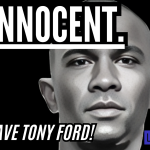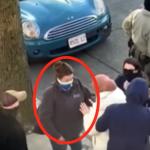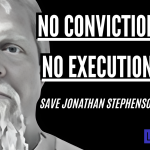Have you ever asked, “What happened to Bob Cratchit’s goose?” What do I mean? Let’s review. When the Ghost of Christmas Present takes Scrooge to view the Christmas dinner at the Cratchits home, the family has a “rather small goose” for the meal. Then when Scrooge awakens on Christmas Day he sends the family a “prize turkey” for their dinner. My point is that the Christmas dinner at the Cratchits that Scrooge saw never did not happen. But he saw it didn’t he? In fact, none of the Christmas activities viewed by Scrooge over the twelve day season could have taken place because he awakes on Christmas Day.
A Christmas Carol is a tale of ghosts showing shadows. Many readers get the impression that the stories of Past and Present are merely filler until Scrooge sees the warning that the Ghost of Christmas Yet to Come scares the hell out of him to get salvations. Scrooge changes and everything else changes. Dickens does not craft his story that way. The story is a carol with stanzas just like any other.
This is the point. Christmas carols are meant to tell some version of the Christmas stories. They may be calls to remember. They may be admonitions to be joyous. They may be giving someone a sense of the wonder of the stories. Dickens makes a story about the Christmas story.
Bob Cratchit is a cypher in Scrooge’s world. He is the clerk who works in his office who later becomes the object of his employer’s charity. But that is a terrible way to view Bob Cratchit. It is how Scrooge begins to see him. The shadows that the ghosts show Scrooge opens his eyes to finally see Bob Cratchit. Bob is a father, a loving husband, a religious man, and a generous man. He is everything Scrooge isn’t but could have been. Bob also sees Scrooge. He refers to his boss as “the founder of our feast.” Scrooge had never considered before what Bob Cratchit sees in him. His view was that the world seeks to use him and take what he has. He thinks Bob the clerk uses him for his wealth. Bob “picks his pocket.” There is something happening deep inside of Scrooge when he sees Tim and learns he would die a death that could be prevented with proper medical care. Tim too sees what happens in the world around him. He cannot play as the other children do. But he enjoys watching them playing. He is also religious and thoughtful. Again Scrooge sees someone who he could have been.
The stories of the nativity of Jesus is a story about seeing. It is said the popular Nativity Scene was invented by St. Francis to remind the people that Jesus was born in poverty. Matthew tells about Herod who cannot see the glory of the Messiah’s birth. He tells about foreign Magi who do. Luke tells about how announcements and recognition of the Messiah is done by women (Mary and Elizabeth) and the shepherds. The Messiah, the glory of God and the peace of God, is recognized by people who do not matter.
Scrooge matters in this world. And now Scrooge sees what he should have seen all along.. The first place Scrooge visits is church. And then he appears at his nephews home to rejoin his family. The next act is to tell Bob in ways the clerk could not have expected that Scrooge sees him and will improve Bob’s situation in life and help Tim to live. Christmas, Dickens tells us, is about opening our eyes and seeing the peoples of the world. The ghosts and their shadows taught Scrooge about reality in a more concrete way than citing figures in ledgers or statistics concerning poverty that blind us to reality. His eyes are open. Scrooge could close them again. But he realizes his life is wasted if he does that.
People who will not see are the most blind. We invent fantasies and call them real. As Chesterton says, it is the ethics of elfland (attributes we learn from characters in stories that begin “one upon a time”) that are the most real and make us beings that are true. Don’t criticize stories that are not “biblical” this season. There is something greater going on in them than are found in merely keeping traditions.














